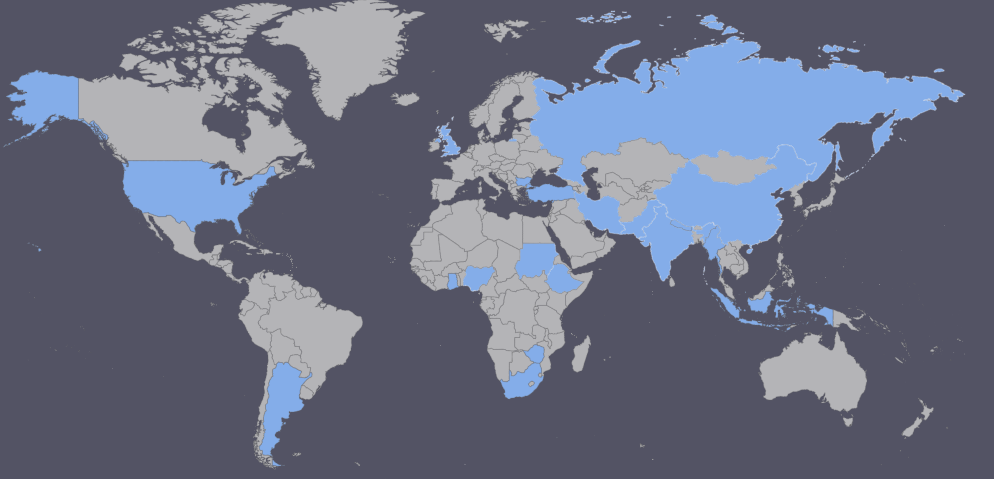Shear Sense Analyses of Basement Complex Rocks in Parts of SW Nigeria
Keywords:
Shear sense, Deformation, Oko/Olla, Kinematic indicator, Pan AfricanAbstract
The study area, Oko/Olla is part of Osi sheet 224 southwest and falls within the Basement Complex of South-Western Nigeria. Field and petrological studies revealed that the area is underlain by metamorphic complexes and late intrusives which include: migmatite, granite gneiss, porphyroblastic gneiss, banded gneiss, fine grain granite, diorite with aplite and pegmatite occurring as intrusions. Migmatite is the dominant rock within the study area. The petrogenetic affiliation of the rocks as indicated by the rocks and mineral assemblage represented by plagioclase +alkali feldspar +biotite ±muscovite ±hornblende in the quartzo-feldpartic rocks of the area, are suggestive of amphibolites facies of metamorphism. Kinematic markers which include folds, boudins, σ– and δ–type porphyroclasts, and strike-slip and dip-slip faults were used as shear sense indicators. Detailed analysis of folds revealed asymmetric fold shapes with preponderance of Z–shape folds. The dominant Z–shape drag folds are consistent with the ductile and brittle dextral shear sense indicated by asymmetric boudins and porphyroclasts geometry. Structural analysis from this study indicates that the ductile fabric was overprinted by brittle deformations resulting from the uplift of the area to a low temperature-pressure conditions which is more favorable for brittle deformations. This over printing relationship is suggestive of continued movement of Olla and Oko areas after uplift of the areas during Pan African thermo-tectogenesis. It is therefore concluded on the basis of petrological evidences as well as clear overprinting relationships as revealed by decisive kinematic markers that although there are some sinistral and conflicting shear sense indicators in the area, dominant network of dextral ductile and brittle shear sense in the study area is consistent with the N-S regional structure in the Basement Complex of Nigeria.
References
Bali, R., Agarwal, K.K., 1999. Microstructures of mylonites in the Almora Crystalline Zone, Kumaun Lesser Himalaya. In Gondwana Research Group Memoir 6, pp. 111-116. Geodynamics of the NW Himalaya (AX Jain and R.M. Manickavasagam, Eds.) GRG Gondwana Research Group, Japan (9) (PDF) Microstructures of mylonites in the Almora Crystalline Zone, Kumaun Lesser Himalaya.
Caby, R., 1989. Precambrian terranes of Benin-Nigeria and northeast Brazil and the Late Proterozoic South Atlantic fit. Geological Society of America, Special Paper 230, 145-158.
Carreras, J., Druguet, E., Griera, A., 2005. Shear zone-related folds. Journal of Structural Geology 27 (7), 1229-1251.
Ducea, M.N., Negulescu, E., Profeta, L., Săbău, G., Jianu, D., Petrescu, L., Hoffman, D., 2016. Evolution of the Sibişel Shear Zone (South Carpathians): A study of its type locality near Răşinari (Romania) and tectonic implications. Tectonics 35, 2131-2157.
Ganno, S., Nzenti, J.P., Ngnotue, T., Kankeu, B., Kouankap, N.G.D., 2010. Polyphase Deformation and Evidence for Transpressive Tectonics in the KimbiArea, Northwestern Cameroon Pan African Fold Belt. Journal of Geology and Mining Research 2 (1), 001015.
Goscombe, B.D., Passchier, C.W., 2003. Asymmetric Boudinsas Shear Sense Indicators. Journal of Structural Geology 25, 575-589.
Okonkwo, C.T., 2001. Structural evolution of Bode Saadu area, southwestern Nigeria Africa. Journal of Science and Technology (AJST) Science and Engineering Series 2 (2), 17-24.
Okonkwo, C.T., 2008. Structural evolution of Precambrian Basement Rocks of Jebba Area. Global Journal of Geological Sciences 6 (2), 145-152.
Olayinka, A.I., 1992. Geophysical siting of boreholes in crystalline basement areas of Africa. Journal of African Earth Sciences (and the Middle East) 14 (2), 197-207.
Oyinloye, O.A., 2011. Geology and Geotectonic Setting of the Basement Complex Rocks in Southwestern Nigeria: Implications on Provenance and Evolution. In Earth and Environmental Sciences, InTech Europe, University Campus STeP Ri Slavka Krautzeka 83/A 51000 Rijeka, Croatia.
Passchier, C.W., Williams, P.R., 1996.Conflicting Shear Sense Indicators in Shear Zones; the Problem of Non-Ideal Sections. Journal of Structural Geology 18 (10), 1281-1284.
Rahaman, M.A., 1976. Review of the Basement Geology of Southwestern Nigeria. In C.A. Kogbe (Editor) Geology of Nigeria, Elizabethan Publishing Co., Lagos, p. 41-58.
Rahaman, M.A., 1988. Recent Advances in the Study of the Basement Complex of Nigeria. In Oluyide P.O., Mbonu W.C., Ogezi A.E., Egbuniwe I.G., Ajibade A.C. and Umeji A.C.(eds). Precambrian Geology of Nigeria. Geology Survey of Nigeria, 11-41.
Ramsay J.G. 1980. Shear Zone Geometry: A Review. Journal of Structural Geology 2 (1-2), 83-99.
Woodcock, N.H., 1986. The role of strike-slip fault systems at plate boundaries. Philosophical Transactions of the Royal Society of London A317, 13-29.
Woodcock, N.H., Fischer, M., 1986. Strike-slip duplexes. Journal of Structural Geology 8 (7), 725-735.
Yakeu S.A.F., Njanko, T., Njonfang, E.d, Fozing, E.M., and Tcheumenak, J. 2014. Fotouni-FondjomekwetDuctile Shear Zone” (West–Cameroon): Kinematic Markers and Consequences on the Structural Evolution of the Bandja Plutonic Complex. Syllabus Review, Science Series 5, 1-11.
Downloads
Published
Issue
Section
License
Copyright (c) 2022 Olufemi S. Bamigboye, Mr. 'Toba E. Bamidele, Dr. Adeonipekun D. Adedoyin, Mr. Taofeeq A. Issa, Dr.(Mrs.) Omolayo A. Omorinoye

This work is licensed under a Creative Commons Attribution-NonCommercial-NoDerivatives 4.0 International License.
The authors keep the copyrights of the published materials with them, but the authors are aggee to give an exclusive license to the publisher that transfers all publishing and commercial exploitation rights to the publisher. The puslisher then shares the content published in this journal under CC BY-NC-ND license.



